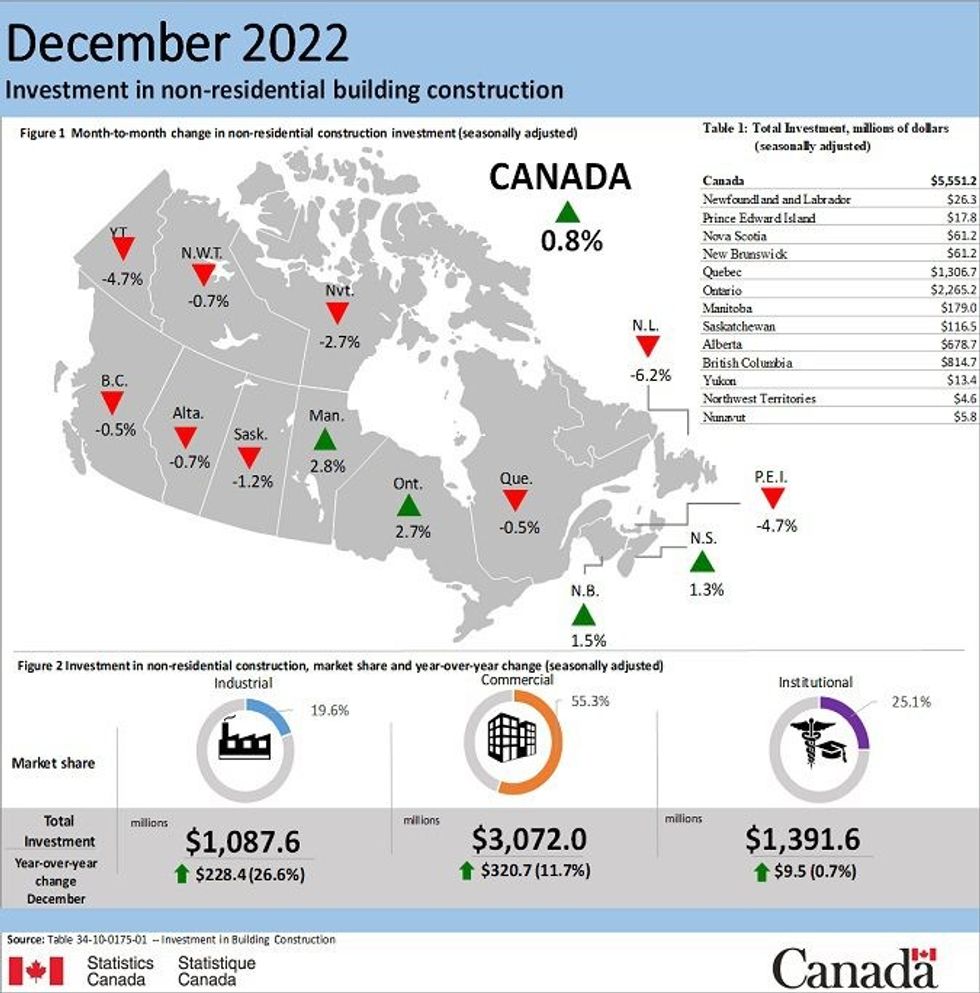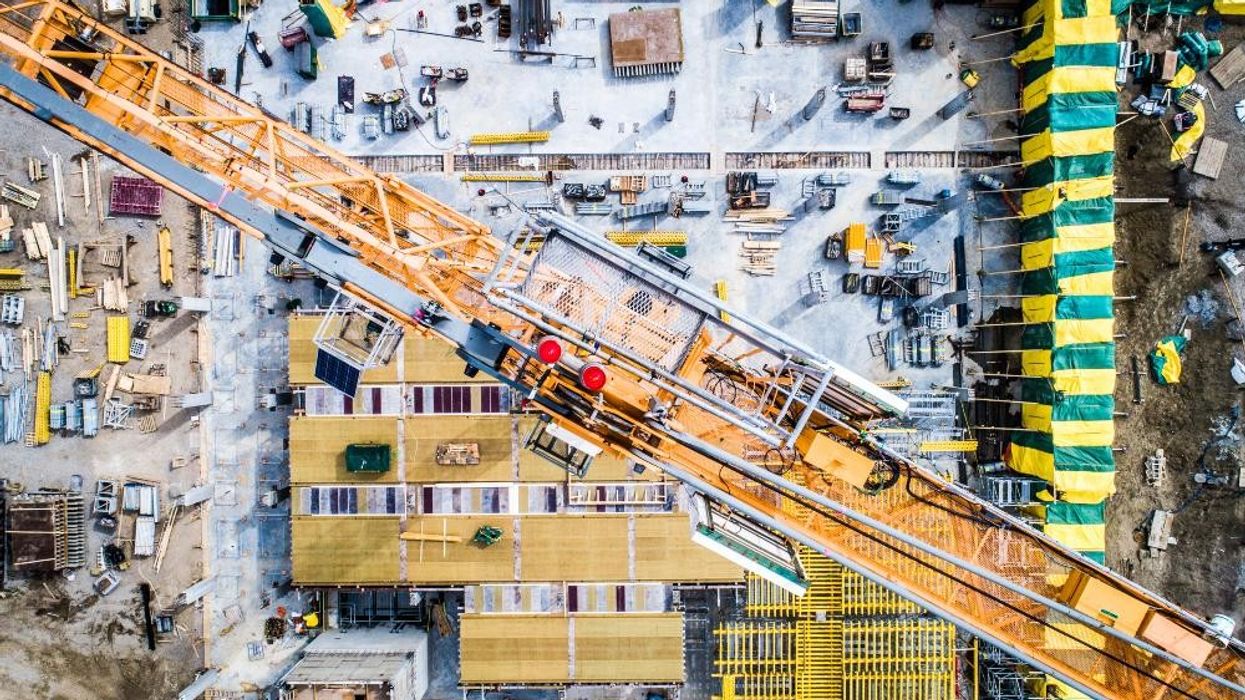As inflation grew and interest rates rose in 2022, compounding with the supply chain issues and labour shortages that resulted from the pandemic, the cost of construction grew accordingly, forcing many developers and builders to pause and reassess.
Last week, Statistics Canada published new data that quantifies those construction cost increases, and puts what we saw in 2022 in context.
According to Statistics Canada's composite price index that includes 11 key census metropolitan areas (CMAs) across Canada -- Vancouver, Edmonton, Calgary, Saskatoon, Winnipeg, Toronto, Ottawa, Montréal, Moncton, Halifax, and St. John's -- non-residential construction saw a cost increase of 12.5% from 2021 to 2022, which was the highest year-over-year increase since 1981, when the Non-Residential Building Construction Price Index was first introduced.
Non-residential buildings include commercial buildings such as offices and warehouses, as well as industrial buildings including factories and bus depots with maintenance facilities, and Statistics Canada attributes the cost increases to the rising costs of wood, plastic, structural steel framing, and metal fabrications required for these buildings.
By building type, factories and bus depots with maintenance facilities saw the highest construction cost increases in 2022, with costs increasing 14.7% and 14.9%, respectively.
By region, non-residential construction costs increased the most in Toronto (16.2%), followed by Ottawa (13.6%), then Montréal (12.9%). Each of the 11 CMAs saw their highest annual construction cost increase since the Index's inception in 1981, except for Calgary, Edmonton, and Vancouver, which saw a significant increase in 2007.
Construction costs increased significantly in the first half of 2022, but increased at a slower pace in the latter half of the year.
However, all of this does not seem to have made a significant dent on non-residential construction investment, according to data Statistics Canada published today.
According to that data, while overall investment in building construction decreased by 1.3% to $20.2B in December and investment in residential construction declined 2.1% to $14.6B, investment in non-residential construction saw an increase of 0.8%, to $5.6B.
Furthermore, that increase in non-residential construction investment was the seventh consecutive month investment had increased, indicating that investment saw an uptick again after the cost increases slowed down in the second half of the year.
In December, Ontario accounted for most of the growth (by dollars), seeing a 2.7% increase in non-residential construction investment. By building type, investment in industrial construction saw an increase of $2.1B, an increase for the 13th consecutive month, evidence that the demand for industrial space has been strong enough to outweigh rising construction costs.

Like non-residential construction, residential construction saw cost increases as well in 2022, with the 11-CMA composite price index rising 19.1%, the highest year-over-year increase since the index was introduced in 2017, with double-digit cost increases in all 11 CMAs except for Moncton, and costs rising the most for single-detached homes (20.9%).
"A combination of increasing demand for construction and supply challenges due to labour shortages resulted in limited availability and higher prices for materials and labour in the construction industry in 2022," Statistics Canada said.
READ: BC Office and Industrial Vacancies Remain Tightest in Canada, With Few Solutions
Fuel prices were also a factor, as were construction industry job vacancy rates, which hit a high of 8.3% in April before starting to decline, and also added upward pressure on labour wages that raised overall construction costs once again.
The amount of building permits and permit values for residential construction were down in 2022 compared to 2021, but were -- yet again -- higher for non-residential construction, further evidence that despite all the changing variables, the demand for non-residential space may continue to win out.


















